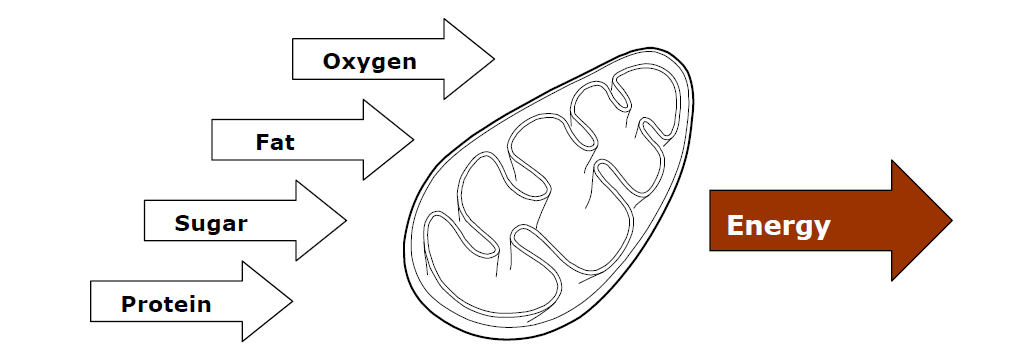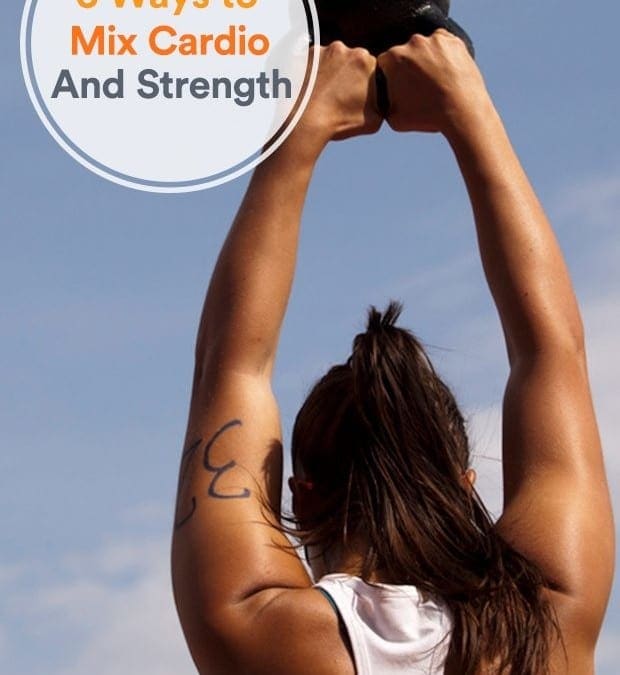
by Dr Alex Jimenez DC, APRN, FNP-BC, CFMP, IFMCP | Fitness, Health, Wellness
Looking to take your burpees to the next level? If you’ve mastered this basic go-to fitness move, you have to try this challenging new version demoed by Nike trainers Kirsty Godso and Lauren Williams, AKA the “Pyro Girls,” on Instagram this week.
What makes their burpee upgrade so hot? “It challenges core and shoulder stability and strength differently from a regular burpee,” explains Williams. “You have to balance the explosiveness of the tuck with shoulder stability and core strength so you can do the move with control and grace.”
Up for the challenge? Here’s how to do it: Start with your feet hip-width apart. Then place both hands on ground and jump both feet back, going into a plank. Jump both legs up into the air while bending knees to bring feet toward butt (think donkey kick). Hop legs back out to a plank, and then jump feet in toward your hands. As you stand, explode up, bringing knees into chest. Land softly, and then immediately repeat the entire sequence. If you’re feeling extra cool, grab a buddy and try doing this move in tandem like Godso and Williams.
RELATED: Transform Your Body in Your Living Room With This Intense HIIT Workout
Yep, it’s just as intense as you think. (We know, we tried it!) Need a modification? Williams suggests just jumping your feet back up to your hands instead of attempting the full-blown donkey kick.
Now, who’s ready to torch some calories?

by Dr Alex Jimenez DC, APRN, FNP-BC, CFMP, IFMCP | Health, Natural Health, Wellness
Doctor of Chiropractic, Dr. Alexander Jimenez discusses mitochondria and one’s health.
Mitochondria: you might not know what they are, but they are vital to your health. �Rhonda Patrick, PhD is a biomedical scientist who has studied the interaction between mitochondrial metabolism, aberrant metabolism, and cancer.
She�s also done research on aging at the Salk Institute for Biological Sciences in La Jolla, California.
�I�ve had a variety of experiences doing research on aging, cancer, and metabolism,� she explains. �Now, currently, I�m in Oakland, California, where I�m doing my post-doctoral research, working with Dr. Bruce Ames�
The primary focus of the research is the role of nutrition in preventing age-related diseases like cancer, neurodegenerative diseases, and different inflammatory-related diseases like obesity and type 2 diabetes.
I�ve been doing a lot of research currently on nutrition, specifically what roles micronutrients play in biological processes; how inadequacies and certain micronutrients can lead to insidious types of damage that can accumulate over decades, [and how they] lead to things like cancer and Alzheimer�s disease.�
Part of her work involves the identification of early biomarkers of disease. For example, DNA damage is an early biomarker for cancer. She then tries to determine which micronutrients might help repair that DNA damage.
She�s also investigated mitochondrial function and metabolism, which is one of my own most recent passions. Dr. Lee Know�s book, �Life � The Epic Story of Our Mitochondria�, is a really good primer if you want to learn more about this topic after listening to this interview.
Your mitochondria have enormous potential to influence your health, specifically cancer, and I�m starting to believe that optimizing mitochondrial metabolism may in fact be at the core of effective cancer treatment.
The Importance Of Optimizing Mitochondrial Metabolism
Mitochondria are tiny organelles, originally thought to be derived from bacteria. Red blood cells and skin cells have very little to none, while germ cells have 100,000, but most cells have one to 2,000 of them. They�re the primary source of energy for your body.
In order for your organs to function properly, they require energy, and that energy is produced by the mitochondria.
Since mitochondrial function is at the very heart of everything that occurs in your body, optimizing mitochondrial function � and preventing mitochondrial dysfunction by making sure you get all the right nutrients and precursors your mitochondria need � is extremely important for health and disease prevention.
For example, one of the universal characteristics of cancer cells is they have serious mitochondrial dysfunction with radically decreased numbers of functional mitochondria.
�The mitochondria can still function in cancer cells. But one of the things that occur [in cancer cells] is that they immediately become dependent on glucose and they�re not using their mitochondria even though they have mitochondria there. They make this metabolic switch,��Patrick says.
Dr. Otto Warburg was a physician with a Ph.D. in chemistry and was close friends with Albert Einstein. Most experts recognize Warburg as the greatest biochemist of the 20th century.
He received a Nobel Prize in 1931 for his discovery that cancer cells use glucose as a source of energy production. This is called the �Warburg Effect� and, sadly, to this day it is essentially ignored by nearly every expert.
I am beyond convinced that using a ketogenic diet, which radically improves mitochondrial health, could help most cancers, especially if used in conjunction with glucose fermentation poisons like 3-bromopyruvate.
How Mitochondria Produce Energy

To produce energy, your mitochondria require oxygen from the air you breathe and fat and glucose from the food you eat.
These two processes � breathing and eating � are coupled together in a process called oxidative phosphorylation. That�s what the mitochondria use to generate energy in the form of ATP.
Your mitochondria have a series of electron transport chains in which they pass electrons from the reduced form of the food you eat to combine it with oxygen from the air you breathe and ultimately to form water.
This process drives protons across the mitochondrial membrane, which recharges ATP (adenosine triphosphate) from ADP (adenosine diphosphate). ATP is the carrier of energy throughout your body.
However, that process also produces byproducts such as reactive oxygen species (ROS), which are damaging to your cells, and your mitochondrial DNA, which are then transferred to your nuclear DNA.
So there�s a trade-off. In producing energy, your body also ages from the damaging aspects from the ROS that are generated. How quickly your body ages largely depends on how well your mitochondria work, and how much damage can be minimized by diet optimization.
Mitochondria�s Role In Cancer
When cancer cells are present, the reactive oxygen species produced as a byproduct of ATP production normally send a signal that sets in motion a process of cellular suicide, also known as apoptosis.
Since you generate cancer cells every day, this is a good thing. By killing off damaged cells, your body can eliminate and replace them with healthy cells.
Cancer cells, however, are resistant to this suicide protocol, and have a built-in defense against it as articulately explained by Dr. Warburg and subsequently by Thomas Seyfried, who has done extensive research on cancer as a metabolic disease
As explained by Patrick:
�One of the mechanisms by which chemotherapeutic drugs work is they create reactive oxygen species. They create damage, and that�s enough to push that cancer cell to die.
I think the reason for that is because, a cancer cell � which is not using its mitochondria, meaning it�s not producing those reactive oxygen species any longer � all of a sudden you force it to use its mitochondria and you get a burst of reactive oxygen species because that�s what mitochondria do, and boom, death, because that cancer cell is already primed for that death. It�s ready to die.�
The Benefits Of Avoiding Late-Night Eating
I�ve been a fan of intermittent fasting for quite some time for a variety of reasons, certainly longevity and health issues, but also because it appears to provide powerful cancer prevention and treatment benefit. And the mechanism for that is related to the effect fasting has on your mitochondria.
As mentioned, a major side effect of the transfer of electrons that the mitochondria are involved in is that some leak from the electron transport chain to react with oxygen to form the free radical superoxide.
Superoxide anion, the product of a one electron reduction of oxygen, is the precursor of most reactive oxygen species and a mediator in oxidative chain reactions. These oxygen free radicals attack the lipids in your cell membranes, protein receptors, enzymes, and DNA that can prematurely kill your mitochondria.
Some free radicals are actually good and your body requires them to regulate cellular function, but problems develop when you have excessive free radical production. Sadly that is the case for the majority of the population and why most diseases, especially cancers, are acquired. There are two possible solutions to this problem:
- Increase your antioxidants
- Reduce mitochondrial free radical production
I believe one of the best strategies for reducing mitochondrial free radical production is to limit the amount of fuel you feed your body. This is a noncontroversial position as calorie restriction has consistently shown many therapeutic benefits. This is one of the reasons why intermittent fasting works, as it limits the window that you are eating and automatically reduces your calories.
It is particularly effective if you avoid eating several hours before going to sleep as that is your most metabolically lowered state. A review paper1 that provides much of the experimental work for the above explanation was published in 2011, titled �Mitochondrial DNA Damage and Animal Longevity: Insights from Comparative Studies.�
It may be too complex for many laypeople, but the take-home message is that since your body uses the least amount of calories when sleeping, you�ll want to avoid eating close to bedtime because adding excess fuel at this time will generate excessive free radicals that will damage your tissues, accelerate aging, and contribute to chronic disease.
Other Ways Fasting Promotes Healthy Mitochondrial Function
Patrick also notes that part of the mechanism by which fasting works is that your body has to rely on lipids and stored fats for energy, which means your cells are forced to use their mitochondria. Your mitochondria are the only mechanisms by which your body can make energy from fat. So, fasting helps activate your mitochondria.
She also believes this plays a huge part in the mechanism by which intermittent fasting and a ketogenic diet may kill cancer cells, and why certain drugs that activate mitochondria can kill cancer cells. Again, it�s because it creates a burst of reactive oxygen species, the damage from which tips the scale and causes the cancer cells to die.
�Of course, there are a lot of very other interesting mechanisms that occur when you�re fasting,� she says. �Your body also clears away damaged cells through a process called autophagy, which basically means when a cell that�s damaged, it can die. But if it doesn�t die, sometimes it becomes what�s called senescent and this happens a lot with aging. What that means is that the cell is not dead but it�s not really alive either. It�s not doing its function.
It�s just kind of sitting around in your body secreting pro-inflammatory molecules, things that are damaging other nearby cells thereby accelerating the aging process because inflammation drives aging in so many different ways. Autophagy clears away those cells that are just sitting there creating damage and not doing much else, which is nice because that�s also a very important biological mechanism for staying healthy.�
Feeding Your Mitochondria
In terms of nutrition, Patrick emphasizes the importance of the following nutrients; important co-factors needed for your mitochondrial enzymes to function properly:
- CoQ10 or ubiquinol (the reduced form)
- L-Carnitine, which shuttles fatty acids to the mitochondria
- D-ribose, which is raw material for ATP molecule
- Magnesium
- Omega-3 fatty acids
- All B vitamins, including riboflavin, thiamine, and B6
- Alpha-lipoic acid (ALA)
As noted by Patrick:
�I prefer to get as many micronutrients as I can from whole foods for a variety of reasons. One, they are complexed with fiber help with absorption. The nutrients are also in the right ratios. You�re not getting too much. The balance is right. And there are other components that are probably yet to be identified in there.
You have to be very vigilant in making sure you�re eating a very broad spectrum [of foods] and getting the right micronutrients. I think that taking a B complex supplement is good for that reason.
It�s the reason I take one, and also for the reason that as we age, we also do not get B vitamins into ourselves as readily, largely due to our cell membranes getting stiffer. This changes the way B vitamins are transported into the cell. B vitamins are water soluble so they�re not stored in fat. There�s not really an upper toxicity associated with them. If anything, you�re going to pee a little bit more out. But I really think they�re beneficial.�
Exercise Helps Keep Your Mitochondria Young
Exercise also promotes mitochondrial health, as it forces your mitochondria to work harder. As mentioned earlier, one of the side effects of mitochondria working harder is that they�re making reactive oxygen species, which act as signaling molecules. One of the functions they signal is to make more mitochondria. So, when you exercise, your body will respond by creating more mitochondria to keep up with the heightened energy requirement.
Aging is inevitable. But your biological age can be quite different from your chronological age, and your mitochondria have a lot to do with your biological aging. Patrick cites a recent study showing how people can age biologically at very different rates. The researchers measured over a dozen different biomarkers, such as telomere length, DNA damage, cholesterol LDL, glucose metabolism, and insulin sensitivity, at three points in people�s lives: ages 22, 32 and 38.
�What was found was that, if you look at someone who was 38, they biologically could look 10 years younger based on their biological markers, or 10 years older. Even though they were the same age, they aged biologically at very different rates.
In fact, if you took a photograph of these individuals and showed it to another bystander and ask them to guess their chronological age, what was interesting, and this is part of the publication, is that people would guess their biological age rather than their chronological age.� �
So regardless of your actual age, how old you look corresponds with your biological biomarkers, which are largely driven by the health of your mitochondria. So the point is that while aging is inevitable, you have enormous control over the way you age, which is really empowering. And one of the key factors is keeping your mitochondria in good working order.
As noted by Patrick, �youthfulness� is not so much about your chronological age, but rather how old you feel, and how well your body works:
�I want to learn how to optimize my own cognitive performance and my athletic performance. I want to also increase the youthful part of my life. I want to be 90. I want to be out there, surfing in San Diego just like I was when I was 20. I would like to not degenerate as rapidly as some people do. I like to stave off that degeneration and extend the youthful part of my life as long as I possibly can so I can enjoy life.�
More Information
To learn more about Patrick�s work, please visit her website, FoundMyFitness.com. She also has a podcast�where she interviews health professionals and scientists on a variety of topics related to health. On her website, you can find videos in which she summarizes key information in clear and easy to understand layman�s terms. You can also sign up for her newsletter, in which she publishes longer, heavily referenced articles.
Click here for the free report, �Nutrigenomics, Epigenetics, and Stress Tolerance: A New Heuristic for Lifestyle Strategy,� which covers some of the topics covered in this interview today, including: the role of DNA damage in aging cells and cancer cells, how blood cells from people show they age at different rates, how intermittent fasting increases autophagy (which clears away damaged cells) and increases genes that produce more healthy mitochondria, and more! You may also want to review her report, �How to Personalize Your Nutrition Based On Your Genes.�
Source:
Dr. Mercola

by Dr Alex Jimenez DC, APRN, FNP-BC, CFMP, IFMCP | Fitness, Health, Wellness
Make the most of your rest days
Help your body recover with these self-care strategies from pros.
Eat well and hydrate: “You should be feeding your body nutrient-dense foods, like lean proteins and veggies,” says Rosante. “And be sure to drink plenty of water.”
Use a foam roller: “Imagine knots on a rubber band�trigger points are like that, and exercising can inflame them,” notes Rosante. “Rolling out breaks them up so you cna move better.”
Walk around: “Long walks help increase blood flow to the muscles,” explains Rosante, “bringing oxygen to fix damaged tissue.”
Don’t binge on junk food: “A rest day is not a cheat day,” notes Holder.
Don’t stay up all night: “Sleep is key for your body to recover, repair�muscles, and reset the brain,” says Holder. “Not getting enough can increase food cravings and push your body into chronic stress mode, making it harder to meet your goals.”
Don’t train�duh!: Sounds simple, but it can be challenging. Proper rest optimizes the body for future workouts. And don’t worry: “No gains will be lost in one or even two days,” adds Jon-Erik Kawamoto, founder of JK Conditioning in Newfoundland, Canada. To put it another way: Namaste…in bed.

by Dr Alex Jimenez DC, APRN, FNP-BC, CFMP, IFMCP | Fitness, Health, Wellness
When the going gets tough, yoga. That’s our mantra this spring—and this flow is proof that deep breaths and a little movement can work wonders on your energy levels. It’s led by Tiffany Cruikshank, founder of Yoga Medicine and an expert in the restorative power of yoga. The sequence is meant to wake you up, and help you find your center; so you finish your practice calmer than before, but also invigorated. The routine will also help you feel more connected to your body, as you challenge your muscles and build stamina.
While yoga doesn’t raise your heart rate quite like high-intensity interval training, or HIIT, it does come with its own set of stellar health benefits. Regular yoga sessions can help to reduce migraines, improve sleep quality, and even boost your sex life, thanks to poses that strengthen the pelvic floor muscles (and in turn make your orgasms bigger and better).
RELATED: 3 Yoga Poses to Relieve Stress and Anxiety
Of course yoga has the power to change your body for the better too. The ancient practice can lead to longer, leaner muscles, since it stretches your limbs while building strength simultaneously.
Want to get it on the action? Watch the video to follow along as Cruikshank guides you through a yoga flow that will recharge your batteries stat. It’s perfect for vinyasa novices as well as longtime yogis. Whether you do this routine first thing in the morning, or right in the middle of your afternoon slump, it will leave you feeling healthier and happier, guaranteed. And if you just can’t get enough of Tiffany, visit YogaGlo for more of her classes.

by Dr Alex Jimenez DC, APRN, FNP-BC, CFMP, IFMCP | Fitness, Health, Wellness
This article originally appeared on DailyBurn.com.
Resistance training and cardio exercise can indeed co-exist. In fact, blending them together creates the ideal time-saving gym session. All you have to do is make a few intensity-amplifying tweaks to your existing strength workout and it can drive up your heart rate, burn more calories and improve your cardiovascular health, says New York City-based trainer Laura Miranda, DPT, CSCS, exercise physiologist. Get started on getting more from your workout by following these six strategies that marry weights and cardio. You just might find you’re having more fun, too.
RELATED: 6 Killer Cardio Workouts That Don’t Involve Running
6 Tips for Turning Up the Cardio on Your Strength Workout
1. Vary your rest.
The first way to spike your heart rate while strength training: Perform each move back to back with as little rest as possible — that is, while still maintaining good form. Miranda prefers a ladder approach to accomplish this goal. After the first round of resistance exercises, rest for 20 seconds. On the second set, rest for 15 seconds; and the third, pause for a 10-second break. As your body gets less and less time to recover, it taxes your aerobic system, she explains. Keep in mind, because you can’t lift at max weight with this many sets, it’s a good goal for fat loss, rather than strictly strength gains.
RELATED: 12 Brilliant Meal Prep Ideas to Save Time
2. Hold weights in both hands.
Rather than putting all your effort into single-arm movements for exercises like curls, rows or extensions, pick up two dumbbells or kettlebells. Then, go to town. Doing upper-body bilateral movements — like bicep curls with both hands moving at the same time — increases your heart rate more than when focusing on one arm at a time, according to a 2017 study in The Journal of Strength & Conditioning Research.
RELATED: 5 Sports-Inspired Drills That Totally Count as Cardio
3. Pepper in plyometrics.
Explosive movements — think squat jumps and jumping lunges — are super effective and efficient for cranking up your cardio, while still building muscle. To maximize the payoff of these powerful moves, perform at least 15 reps of each exercise. This can keep your heart rate elevated for up to 50 minutes post-exercise, according to one study.
Miranda also recommends combining plyos with a strength and coordination move to lessen some of the jarring impact on your body. For example: Do a dumbbell lateral lunge, followed by a bear crawl, then end with broad jumps. Take a brief rest before cycling through those three exercises again.
RELATED: 3 Plyometric Moves That Turn Up the Burn
4. Lighten your load.
In a traditional strength workout, you’d pick up a weight heavy enough that you could only do a few reps for up to 45 seconds, says Miranda. But to hit the sweet spot where lifting turns more aerobic, opt for lighter weights that allow you to perform a set for one to two minutes. You might even drop the weight altogether and work for longer periods (i.e. go from a weighted squat to simply bodyweight squats). Or, grab a set of five- to eight-pound weights and perform a move like dumbbell uppercuts for one minute. Trust us, it will burn.
RELATED: 3 Quick HIIT Workouts for Beginners
5. Try a two-fer.
Why do a squat or a bicep curl or an overhead press when you can be super efficient and do all three at once? Compound movements like this one require you to use more muscle groups, which gives you a greater metabolic boost, says Miranda. Even better, these multi-move exercises test your coordination. Some others to add to your exercise repertoire: a push-up with row, reverse lunge with triceps extensions, curtsy lunge with bicep curl or a glute bridge with chest press.
RELATED: 3 Exercises to Sculpt Your Entire Body
6. Go beyond everyday exercises.
No doubt you’ve done a burpee or 10. After all, they’re used in many workouts because they’re an efficient way to get your heart rate up between strength sets. “When you choose movements that your body is not used to doing — like getting on and off the floor, as you do for a burpee — it enhances the difficulty of your workout,” says Miranda. (Typically, we’re used to simply sitting, standing and walking.) A burpee requires you to use all major muscle groups at once, which is probably why research shows this move is nearly as good as bicycle sprints in terms of gaining cardiovascular benefits.
Another similar way to enhance the cardio challenge: Do moves that work your body in different planes of motion, says Miranda. For instance, a forward lunge, followed by a side lunge, then wrap it up with a backward lunge. “Our bodies are not used to moving in those sequences,” she says. Wood chops or 180 squat jumps will also do the trick. So not only will you feel your muscles getting fatigue, but you’ll breath heavy while you’re at it. A single workout for strength and cardio…you’re welcome.














